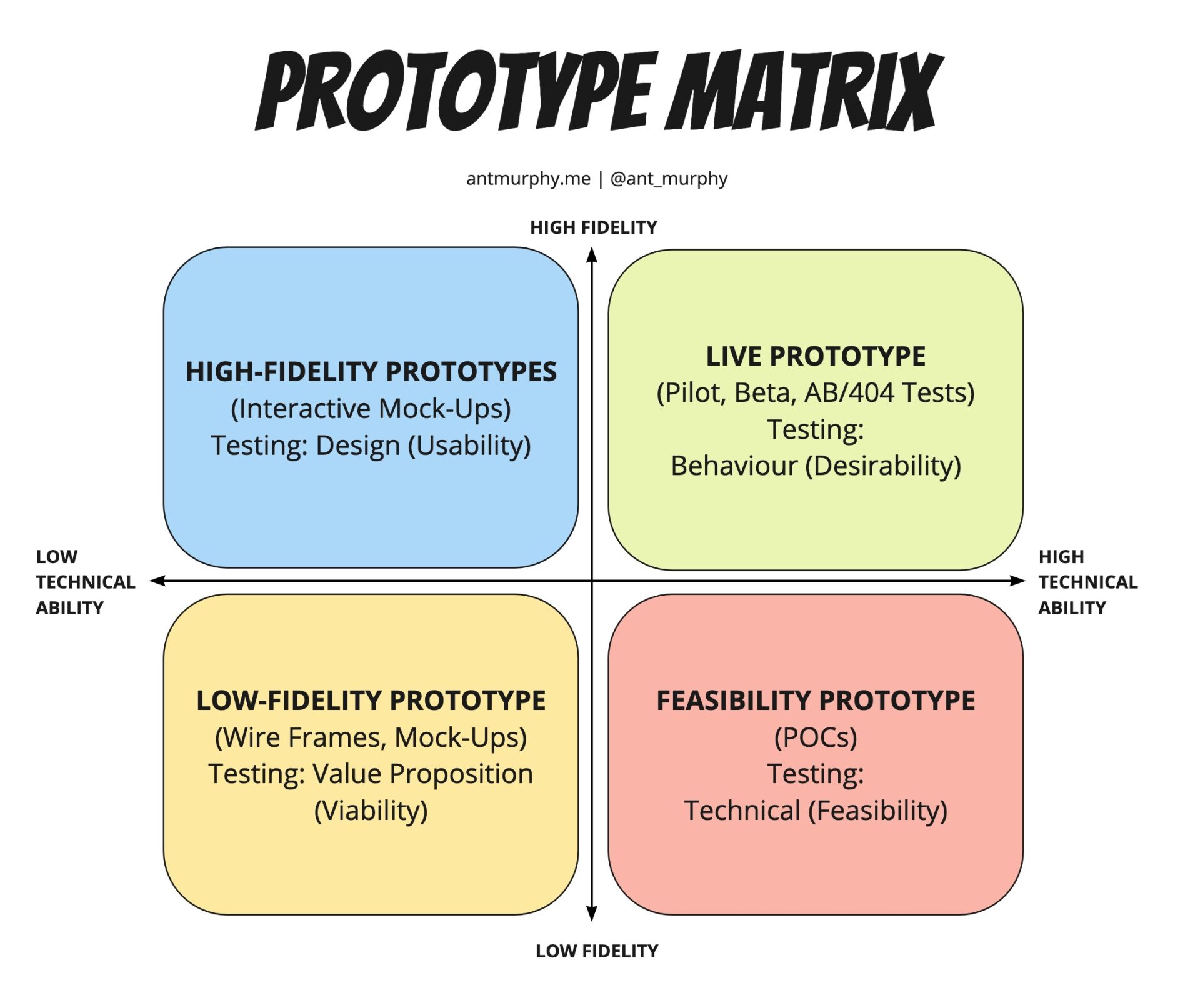
"There is no high or low fidelity, only right fidelity". This quote is something that I've heard over and over again over the years. The notion is that you need to pick the right level of fidelity based on what you are trying to test.
The below matrix is a guide to different types of prototypes you can create and their level of fidelity against the level of technical skill required.
Treat this as a guide to determine what type of prototype you are going to create, and make sure it's aligned to what you're trying to test: e.g. if you're testing flow of functionality it might be better to omit colours as they're a distraction and can lead to feedback on the colours rather than the flow or physical placement of functions.

| Assumption | Prototype Feature | Notes |
| [Assumption to test] | [How are you intending to test this assumption in the prototype?] | |
[insert any sketches or thoughts on what the prototype might look like. These might be wireframes or as a story board or any other format]
| What will be in the Prototype? | What will NOT be in the Prototype? |
[How do you intend to test the prototype? In this section you may also include logistics and/or a discussion guide for the user testing.]
